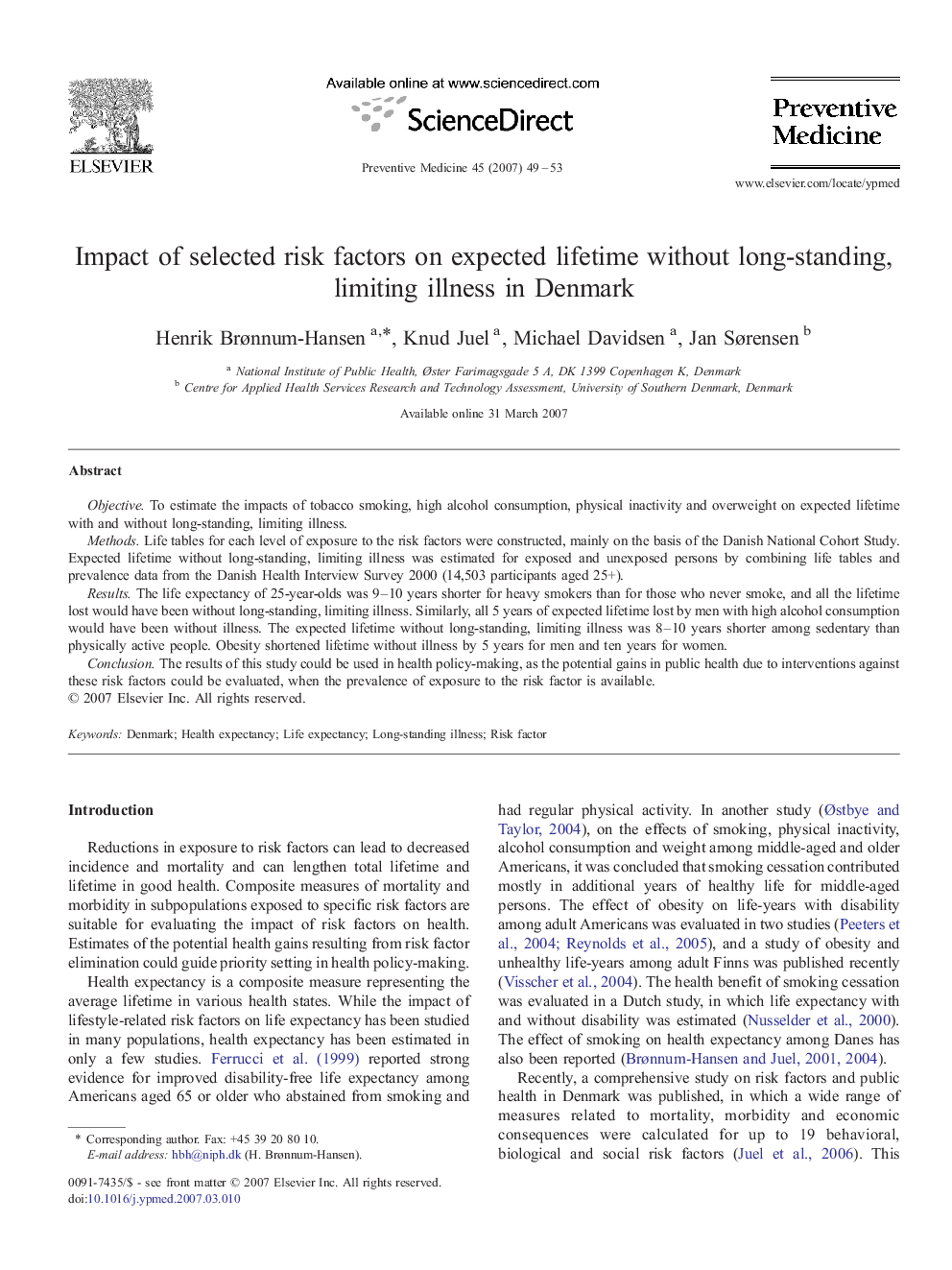| Article ID | Journal | Published Year | Pages | File Type |
|---|---|---|---|---|
| 3101650 | Preventive Medicine | 2007 | 5 Pages |
ObjectiveTo estimate the impacts of tobacco smoking, high alcohol consumption, physical inactivity and overweight on expected lifetime with and without long-standing, limiting illness.MethodsLife tables for each level of exposure to the risk factors were constructed, mainly on the basis of the Danish National Cohort Study. Expected lifetime without long-standing, limiting illness was estimated for exposed and unexposed persons by combining life tables and prevalence data from the Danish Health Interview Survey 2000 (14,503 participants aged 25+).ResultsThe life expectancy of 25-year-olds was 9–10 years shorter for heavy smokers than for those who never smoke, and all the lifetime lost would have been without long-standing, limiting illness. Similarly, all 5 years of expected lifetime lost by men with high alcohol consumption would have been without illness. The expected lifetime without long-standing, limiting illness was 8–10 years shorter among sedentary than physically active people. Obesity shortened lifetime without illness by 5 years for men and ten years for women.ConclusionThe results of this study could be used in health policy-making, as the potential gains in public health due to interventions against these risk factors could be evaluated, when the prevalence of exposure to the risk factor is available.
